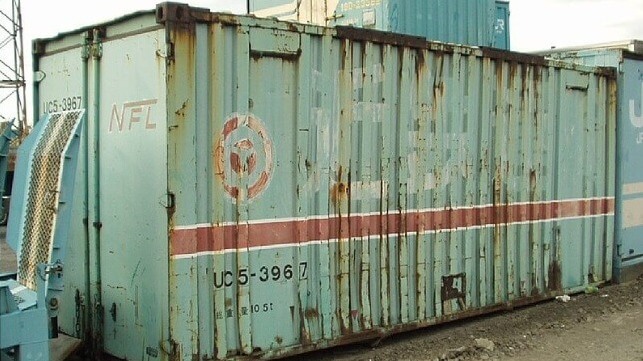Worn-Out Containers Raise Risk for Shippers and Ships, Warns TT Club

In a circular released Tuesday, cargo insurer TT Club highlighted a little-considered risk of the ongoing crunch in containerized freight capacity. With the intense strains on the supply chain - rolling COVID-19 lockdowns, port congestion, soaring consumer demand and more - the availability of new and used containers has been stretched thin. This has created new pressure to turn around containers rapidly after each load, as well as a potentially hazardous incentive for shippers to accept and use any container at all.
According to TT Club, one of the most visible manifestations of the container shortage has been a tendency for old boxes to remain in service with carriers and equipment owners beyond the point they would ordinarily have been retired and scrapped. The insurer says that anecdotally, it appears that old, retired boxes are getting picked up by shippers and put back into oceangoing service - a potentially higher-risk practice.
Older equipment is not problematic in and of itself, so long as it is well-maintained and serviced, TT Club wrote. But keeping solid procedures and controls for maintenance "is critical to underpin safety" and additional upkeep may be required for aging boxes.
The risks of substandard equipment are significant for the shipper, the ship, the crew, the longshoremen and the drayage operator. At the low end of the risk spectrum, poor watertightness can lead to water damage of the cargo. Any containers that fail during transit have to be offloaded, cross-stuffed into a new box, then loaded back on board, adding time and cost.
Even worse, the use of a damaged box could result in a casualty. Damaged doors can fail or fall off, causing injury. Worn-out corner posts and castings raise the risk of dropping a container during hoisting. At worst, a structurally unsound container could end up at the bottom of a stack, which could be up to 11 boxes high on a modern container ship. "A serious structural deficiency in a container towards the bottom of such a stack, in dynamic circumstances, has the real risk of causing a collapse and loss overboard," warns TT Club.
Top image: File image courtesy Gayouza-Japan / CC BY SA 4.0
